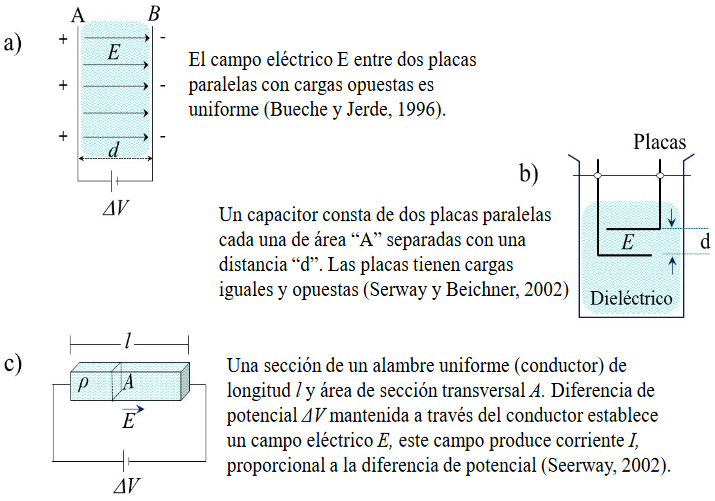Abstract
This work proposes the application of an experimental exercise to help Earth Sciences engineering students understand the concept of electric field, electric potential, capacitance and electrical resistivity. The methodology used includes the development of practical classes in the laboratory and the application of questionnaires. The analysis of the results showed that the majority of students identify the presence of the electric field in a conductive or dielectric material. Students also recognize that the experimental exercises are didactic and strengthen their understanding of the electric field.
References
Aguilar-Marín, P., Chávez-Bacilio, M., y Jáuregui-Rosas, S. (2018). Using analog instruments in Tracker video-based experiments to understand the phenomena of electricity and magnetism in physics education. European Journal of Physics, 39 (3).
Bueche, F.J. y Jerde, D.A., (1996). Fundamentos de Física. Tomo II, Sexta Edición. Mc Graw-Hill Interamericana de México. De Almeida, L. R, da Costa, J. P. C., de Sousa, R. T., de Freitas, E. P.,
Canedo, E. D., Prettz, J., and Del Galdo, G. (2016). IEEE Frontiers in Education Conference (FIE) 15.
Dega, B. G., Kriek, J., y Mogese, T. F. (2013). Students’ conceptual change in electricity and magnetism using simulations: a comparison of cognitive perturbation and cognitive conflict. Journal of Research in Science Teaching, 50(6), 677–698.
Demirci, N. y Cirkinoglu, A. (2004). Determining students preconception/misconceptions in electricity and magnetism. Journal of Turkish Science Education, 1 (2), pp; 51-54.
Hau, R. R. H., Marwoto, P., y Putra, N.M.D. (2018). Pattern of mathematic representation ability in magnetic electricity problem. Journal of Physics: Conf. Series 983, 012015, 1-6.
Kesonen, M. H. P., Asikainen, M. A., y Hirvonen, P.E. (2011). University students' conceptions of the electric and magnetic fields and their interrelationships. European Journal of Physic, 32 (2).
Liani, N.S., Nur, S., y Huda, I. (2020). The influence of communication platform on the students’ engagement in the magnetic electricity e-learning class. Journal of Physics: Conf. Series 1460, 012123.
Mansyur, J. (2015). Teachers and students preliminary stages in physics problem solving. International Education Studies, 8 (9), 1-13.
Narjaikaew P., Emarat N., Soankwan C., y Cowie, B. (2006). Year-1 Thai University Students’ Conceptions of Electricity and Magnetism (Physics Educational Network of Thailand (PENThai) and The Centre for science and Technology Education Research (CSTER)).
Sa'adah, U., y Ariati, J. (2018). Hubungan antara student engagement (keterlibatan siswa) dengan prestasi akademik mata pelajaran matematika pada siswa kelas. XI SMA Negeri 9 Semarang Empati 7 (69).
Serway, R.A (1993). Electricidad y magnetismo. Tercera Edición. Mc Graw-Hill, México.
Serway, R.A y Beichner, R.J., (2002). Física para Ciencias e Ingeniería. Tomo II. Quinta Edición. Mc Graw-Hill, México.
Kolluru, S., y Varughese, J.T. (2017). Structured academic discussions through an online education-specific platform to improve Pharm.D. students learning outcomes. Currents in Pharmacy Teaching and Learning, 9 (2), 230-236.

This work is licensed under a Creative Commons Attribution-NonCommercial 4.0 International License.
Copyright (c) 2023 Universidad Nacional Autónoma de México

